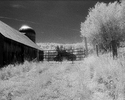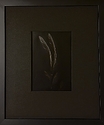rorydancarl002
Member
I am approaching galleries in the new year with this series. Right now, I have 60% of the images I like.
Here is my problem.
The JPEG of the lambda ciba represents the tonality, color, and contrast of my vision
The JPEG of the toned solarization represents the archivability aspects of a traditional print, but does not have the color or contrast I want from this work.
The JPEG of the b&w neg is an unsolarized scan of the original neg, and I do not see this series this way.
I have considered a more dramatic toning with Iron Blue for shadows and a deeper color for the highlights. The reality is that I would only be able to produce three images a day of any one image, and matching in the Future would be impossible.
Do I keep the edition to three? and price the work high and keep the series in fiber.
Do I move to the CIBA version and raise the edition and price the work lower?
I believe the fiber will be more archival, but will never match the color gamut that could be achieved with Lambda cibas. So you can see I am in a bit of a confused state as to which method to pursue.
Any thoughts or comments would be appreciated.
Here is my problem.
The JPEG of the lambda ciba represents the tonality, color, and contrast of my vision
The JPEG of the toned solarization represents the archivability aspects of a traditional print, but does not have the color or contrast I want from this work.
The JPEG of the b&w neg is an unsolarized scan of the original neg, and I do not see this series this way.
I have considered a more dramatic toning with Iron Blue for shadows and a deeper color for the highlights. The reality is that I would only be able to produce three images a day of any one image, and matching in the Future would be impossible.
Do I keep the edition to three? and price the work high and keep the series in fiber.
Do I move to the CIBA version and raise the edition and price the work lower?
I believe the fiber will be more archival, but will never match the color gamut that could be achieved with Lambda cibas. So you can see I am in a bit of a confused state as to which method to pursue.
Any thoughts or comments would be appreciated.







